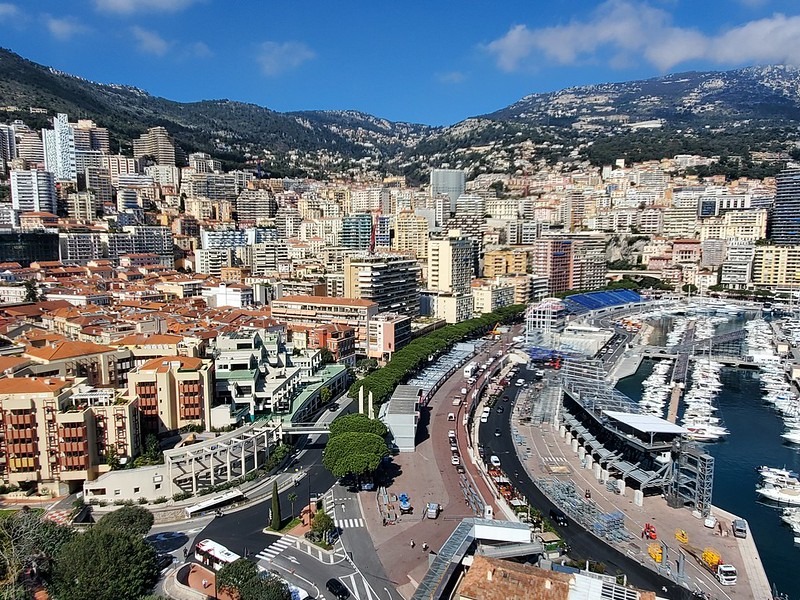Norris prevails as mandatory two-stop rule fails to enliven Monaco Grand Prix
The prestigious Monaco Grand Prix has been a fixture in the Formula One calendar since 1950’s inaugural World Championship, barring the pandemic-shortened 2020 season.
The hallowed streets of Monte Carlo have set the stage for some of the sport’s most famed moments, and only the very best drivers have mastered its ultra-tight corners to emerge victorious – Graham Hill, Nicki Lauda, Ayrton Senna, and France’s second-best racing driver, Olivier Panis.
It’s strange, then, that even when three different World Champions, two first-time championship hopefuls, and six rookies make up the grid, Monaco seems like just another Grand Prix. Sunday’s race was yet another disappointing instalment of a once-iconic sporting event, but this hardly came as a surprise.
Gabriel Bortoletto’s wider hairpin move on Kimi Antonelli marked the sole overtake of the race
It was British driver and championship hopeful Lando Norris who came out on top, qualifying in pole position and fending off the attacks of Ferrari’s Monégasque favourite, Charles Leclerc, to claim his second race win of the 2025 season. Their brief battle for the chequered flag was about as good as the racing got.
Due to innovations in aerodynamics and safety, Formula One cars have only increased in size in recent years. Since the one-off addition of the Nouvelle Chicane in 1986, though, the principality’s narrow streets have been unable to simulate the cars’ enlargement.
As a result, the number of overtakes in Monaco – which are often necessary to make a race exciting for fans – have dwindled. The 2023 edition saw 22 on-track overtakes, actually an increase of nine following the previous year’s rain-disrupted race. 2024 saw only four, with the grid’s top ten remaining unchanged from start to finish.
This year, that low tally was taken even further – Gabriel Bortoletto’s wider hairpin move on Kimi Antonelli marked the sole overtake of the race.
Race organisers were aware of this potential issue, so last winter a contentious new rule was announced for this year’s edition: each driver would be required to use three different set of tyres during the race. With each driver thus mandated to a minimum of two visits to the pit lane, organisers hoped their new rule would inject some much-needed excitement into the race.
The new rule saw teams’ strategies clash, meaning cars were never in a position to race each other
With Monaco being the shortest race on the calendar, it is typically a one-stop affair. Four-time World Champion Max Verstappen anticipated that the two-stop rule would add some “spice” to the Grand Prix. However, the change failed to bring the desired effect.
The new rule saw teams’ strategies clash, meaning cars were never in a position to race each other. Racing Bulls’ Liam Lawson and Williams’ Carlos Sainz both deliberately slowed down to protect their respective teammates, Isack Hadjar and Alex Albon. Sky Sports pundit and former Formula One driver Martin Brundle voiced his frustrations, arguing that the race “was too chaotic” and that “the focus was on pitting, not on racing”.
The rule also saw Verstappen lead the race for the final third, as he hadn’t yet made his second pit stop to change tyres. Despite impressively maintaining a two-second gap over second-placed Norris with considerably older tires, the Dutchman pitted in the race’s final lap to ultimately finish fourth.
Norris wasn’t to complain, as his maiden Monaco win saw him close the gap at the summit of the Drivers’ Championship standings to just three points, behind McLaren teammate Oscar Piastri. The pair’s continued dominance leaves McLaren clear favourites to retain their Constructors’ Championship title.
Elsewhere, impressive strategy and drives from the Racing Bulls duo saw the team bag a combined twelve points, easily their best return of the current season.
Despite the skirmish for the chequered flag and clever uses of strategy, the mandatory two-stop rule failed to yield any of the Monaco magic of old. Those fans questioning the principality’s continued presence on a modern Formula One schedule are still yet to be entirely refuted.

Comments